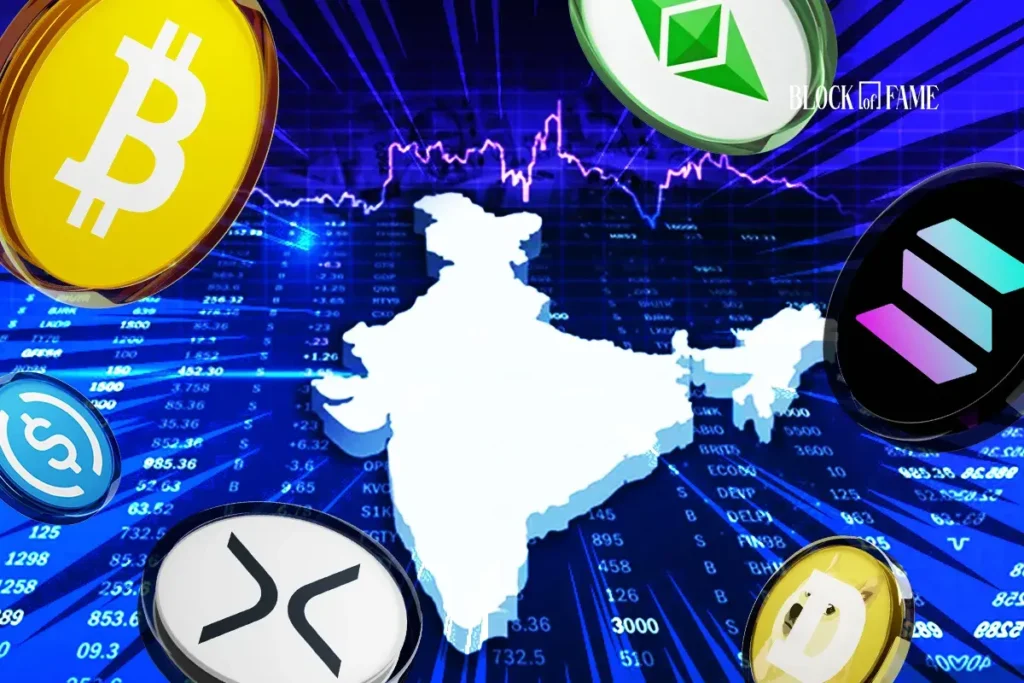The Rise of India’s Crypto Market: A Growing Frontier for Web3
The Indian crypto market has emerged as a focal point in global discussions surrounding blockchain technology and cryptocurrency investment. Recently, Coinbase made headlines with a significant $22 million investment in CoinDCX, valuing the exchange at an impressive $2.45 billion. This move exemplifies Coinbase’s strategy to strengthen its presence in India, a country that is increasingly viewed as pivotal for crypto growth. Other leading exchanges, including Binance, are also taking crucial steps to engage with Indian users, illustrating a burgeoning competitive landscape fueled by strategic collaborations and government engagement.
Expanding User Base and Market Potential
India’s crypto adoption is robust, ranking first among 150 countries in the Chainalysis Global Crypto Adoption Index for two consecutive years. Reports indicate that the country processed around $300 billion in crypto transactions from mid-2024 to mid-2025, with roughly 11-12% of the population engaged as crypto holders. This translates to about 119 to 120 million investors, primarily drawn from the digitally-savvy youth demographic aged 26 to 35. Urban and semi-urban areas show particularly strong adoption rates. The entry of domestic giants into the Web3 space further emphasizes this growth. For example, Reliance Jio has collaborated with Aptos to launch blockchain-based rewards called "Jio Coins" on its platform, while local exchange WazirX plans to resume operations shortly, underscoring a competitive atmosphere influenced by both global and local players.
Regulatory Landscape and Uncertainties
While the Indian crypto market is expanding rapidly, regulatory clarity remains elusive. The government has brought various crypto-related activities under anti-money laundering laws, requiring exchanges to register with the Financial Intelligence Unit (FIU). Presently, 50 Virtual Digital Asset service providers are registered, which indicates a growing framework for oversight. On the other hand, non-compliance notices were recently issued to 25 offshore exchanges, including prominent names like Bybit and BitMEX, as authorities aim to integrate all platforms catering to Indian users within the AML/CFT regulations. This regulatory scrutiny highlights the tension between facilitating growth and ensuring investor protection, setting the stage for potential challenges ahead.
Evolving Outlook and Institutional Interest
Despite some regulatory ambiguities, various financial institutions in India are proactively seeking to understand and integrate blockchain technology. For example, the National Stock Exchange of India has introduced a dedicated course on blockchain technology to educate professionals about its applications. Additionally, the Reserve Bank of India, while advocating for a Central Bank Digital Currency (CBDC), has expressed caution regarding the risks associated with virtual currencies. This dual approach signifies the government’s recognition of blockchain’s potential while remaining vigilant about its implications, thus shaping the future of crypto in India.
The Competitive Edge: Local and Global Players
As the competitive landscape heats up, both global and domestic players are vying for a foothold in the Indian market. Coinbase’s recent investment exemplifies the strategic choices being made by global exchanges to tap into India’s promising demographic. As local players like Reliance Jio and WazirX ramp up their Web3 initiatives, a dynamic interplay is unfolding that could redefine the market. These exchanges are not only competing for user attention but are also likely to influence regulations and shape the overall ecosystem. This heightened engagement from various players is indicative of a collective effort to capitalize on India’s burgeoning crypto opportunities.
Future Prospects and Challenges
Looking ahead, the Indian crypto market is poised for growth, albeit accompanied by unresolved regulatory challenges. The engagement from both local businesses and international exchanges indicates a shared belief in India’s potential as a growing hub for crypto activities. Yet, these developments come with significant risks, particularly regarding regulatory compliance. As institutions and investors navigate this complex landscape, broader discussions about the need for clear guidelines and frameworks will be necessary to ensure a stable and secure environment for future growth.
Conclusion: The Path Forward
In conclusion, India’s crypto market presents an intriguing mix of opportunities and challenges. As industry giants forge partnerships, launch innovative products, and explore regulatory avenues, the potential for exponential growth in the region remains strong. Stakeholders must navigate the evolving landscape carefully, balancing innovation with compliance to unlock the full potential of India’s cryptocurrency domain. The future of India’s crypto market hinges on how both regulatory bodies and industry players respond to these challenges, shaping the trajectory of this exciting frontier in finance.


